Part Two
Mexico City, September 2019
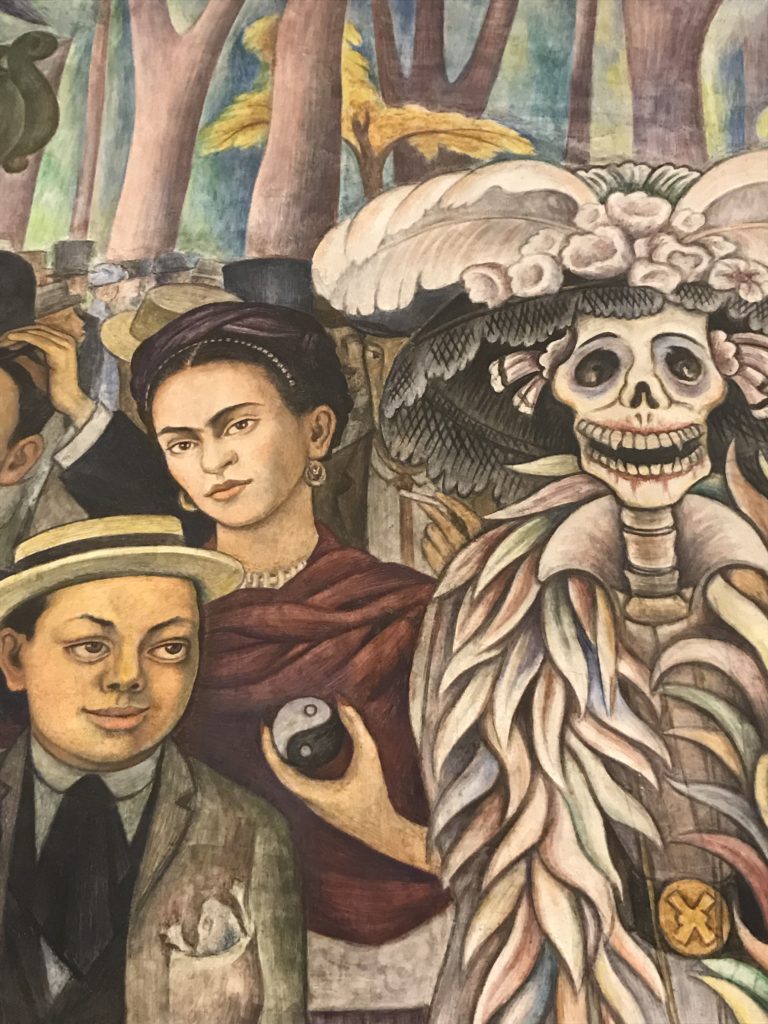
No one can visit Mexico City and not spend quality time with two of Mexico’s most famous personages and artists: Frida Kahlo and Diego Rivera.
Cortés first settled and built his home within the neighborhood of Coyoacán. But is not Cortés which draws visitors, but the neighborhood’s most famous residents:
Frida Kahlo(1907 – 1954) was a Mexican painter known for her many self-portraits, and maybe for her expressive black eyebrows and delicate mustache. Her paintings often featured roots growing out of her body and other symbolism of her personal growth – and agony. Frida had polio as a child and spent much time in hospitals as a result of a horrific bus accident when she was teen. The resulting pain, wounds both physical and psychological, followed her throughout her life. Many of Kahlo’s medical paintings deal with this physical pain and guilt, the mental pain of dealing with childbirth and miscarriage, and over her husband’s frequent unfaithfulness. She spent the last years of her life in pain and bed-ridden. However, Kahlo was not a weakling. It could also be said that Frida was the first to support and symbolize the feminist movement and has become an icon of the LGBT movement.
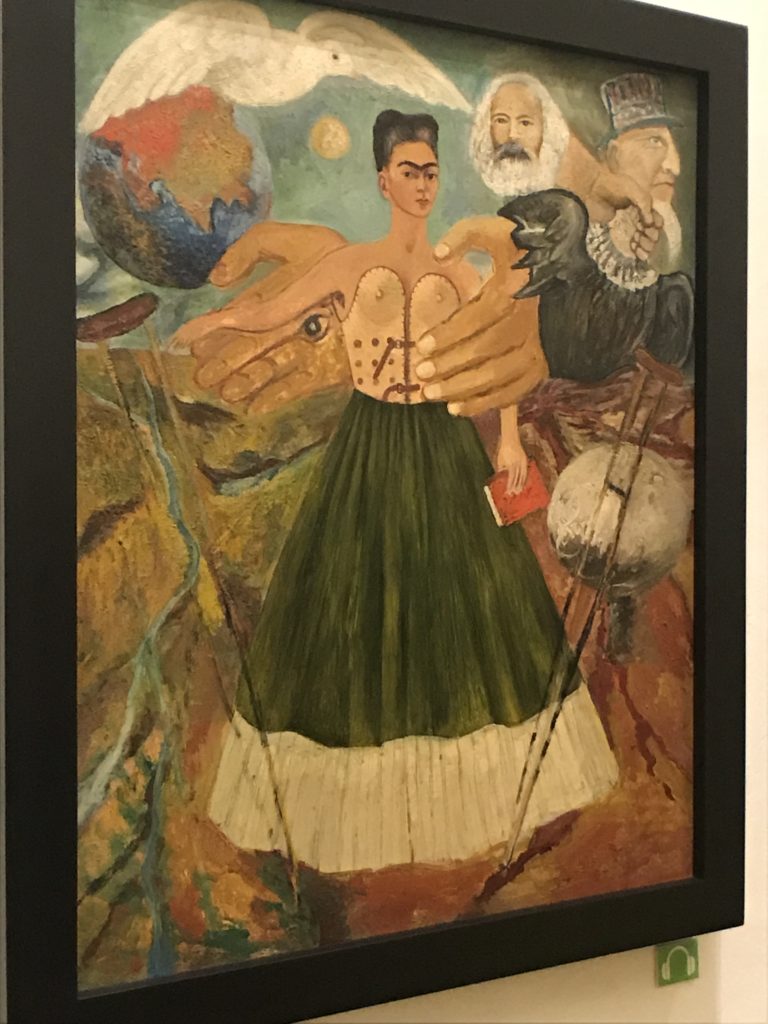
Kahlo, the first Mexican painter to be displayed in the Louvre in Paris, developed complex images and symbols, extensively employing pre-Columbian and Christian symbols and mythology. In most of her self-portraits, her face is a mask surrounded by iconographical cues encouraging the viewer to find deeper meanings for it. Aztec mythology features heavily in Kahlo’s paintings in symbols like monkeys, skeletons, skulls, blood, and hearts. Many of her paintings depict opposites: life and death, pre-modernity and modernity, Mexican and European, male and female.
Kahlo’s family home is in Coyoacán and here she lived much of her life. La Casa Azul is open as a museum dedicated to her life and art. The lines outside attest to her popularity both as a person and as an artist. Her home and gardens are filled with Kahlo’s spirit. “Viva la Vida!”
Diego Rivera (1886-1957)

Frida Kahlo’s interests in politics led to her joining the Mexican Communist Party, through which she met fellow Mexican artist and future husband, Diego Rivera. The couple married in 1928. Rivera’s paintings can be seen from the murals in San Francisco’s Stock Exchange, the Detroit Institute of Arts, and even, at one time, at the Rockefeller Center in New York City, though this one was destroyed after a furor erupted over the mural’s depiction of Vladimir Lenin. (Rivera recreated his version and it is now in the Palacio de Bellas Artes in CDMS.) Rivera was also inspired by artists Picasso and Cézanne and by styles from Cubism to Post-Impressionism.
Kahlo and Rivera gave asylum to former Soviet leader Leon Trotsky and his wife after he fled Russia. The couple lived at La Casa Azul for over two years, with Kahlo and Trotsky not only becoming good friends but also having a brief affair. On 21 August 1940, Trotsky was assassinated in Coyoacán. The Leon Trotsky House Museumis just a short walk northeast of La Casa Azul.
Frida’s marriage was turbulent and she and Rivera divorced in 1939 (remarried the following year) as a result of his numerous infidelities, which included her younger sister. They remained friends and deeply devoted to each other.
The House and Studio of Diego Rivera and Frida Kahlo, 2.6 miles west of La Casa Azul, is also open for visitors. It consists of twin houses, one blue for Frida and the larger white one for Diego, connected by an elevated foot bridge. Built in 1934, the modern, functional design is the work of architect Juan O’Gorman. Inside are many of Rivera’s art, papier-mâché cartoon figures, paintings, and personal possessions. (Most of Kahlo’s possessions were returned to La Casa Azul when she divorced Rivera.) Sundays are free.
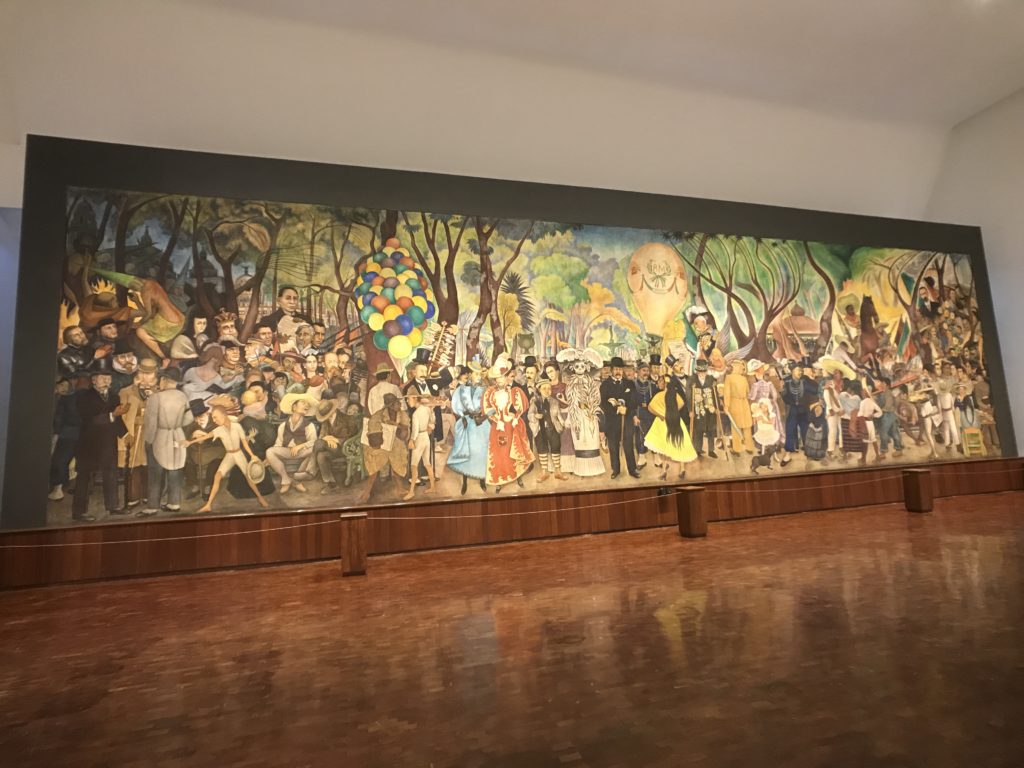
Rivera’s art and murals are spread over several locations in Mexico City. The Diego Rivera Mural Museum is near the west end of Almeda Central Park. The park itself is quite nice and the oldest public park in the city. The museum, of course, showcases Rivera’s art. One of his most famous murals, Sueño de una Tarde Dominical en la Alameda Central(Dream of a Sunday Afternoon in the Alameda Central) is a 45’ long mural painted in 1947 and includes the many historic figures of the city who walked this park, from Hernán Cortés and Benito Juárez to Frida Kahlo (and other of Rivera’s wives). The mural was saved from destruction when it was moved here in 1986 after its original location at the Hotel del Prado was destroyed by earthquake.
The Museo Dolores Olmedois the beautiful peafowl-infested estate of Rivera’s lifelong friend and businesswoman Dolores Olmedo, and houses a wonderful selection of art among which are several pieces by Kahlo and Rivera. (entrance is included with the Frida Kahlo ticket). Olmedo’s museum opened in 2002 and is located in the southern neighborhood of Xochimilco. The large complex consists of several buildings housing over 140 paintings by Rivera and another 25 by Kahlo. The Indian peafowls look just like peacocks and were introduced from the Indian subcontinent.
And then there is…
Let’s lay it right out there in the reality of light. The air quality in this massive, sprawling city of over 9 million is awful. Though considered to be at a high altitude of 3,382’ above sea level, the greater metropolitan area of Mexico City, the most populous in the Western Hemisphere, tops 21 million. And, typically, they love their cars. What one immediately notices arriving into CDMX is that the city is situated pretty much in a bowl, all 573 sq. miles of it. Surrounded by mountains and volcanoes that can reach 16,000 feet, you won’t particularly suffer from altitude sickness as much as respiratory distress. Its smog layer is daunting. Aztecs/Mexica, who founded this city some 700 years ago, would definitely had developed some real estate at the beach, if Cortés hadn’t arrived around 1519, murdered Moctezuma II, and generally commit genocide before razing Tenochtitlan in favor of his own architects.
Ubiquitous pink and white cabs come with unending warnings and horror stories of taking advantage of locals and visitors alike. It is hard to tell the difference between the real, basically honest taxis and the ones who are “freelancing” and have no official license. We were fortunate to find Carlos Rosales Sosa of Taxi Turistico outside the Frida Kahlo house. He had a card which listed point-to-point prices and was personable and helpful. So, we hired him for the day to take us to more remote locations like Xochimilco and later to the airport. He was very reasonable in price and it took a lot of stress off finding individual taxis. Uber is also present in CDMX. (carlos_r1041@yahoo.com.mx)
Av Francisco I. Madero is a wonderful, and jampacked, pedestrian street filled with gold shops, jewelry, name-brand clothing and more. It’s shaded side streets abound with cafes and restaurants.
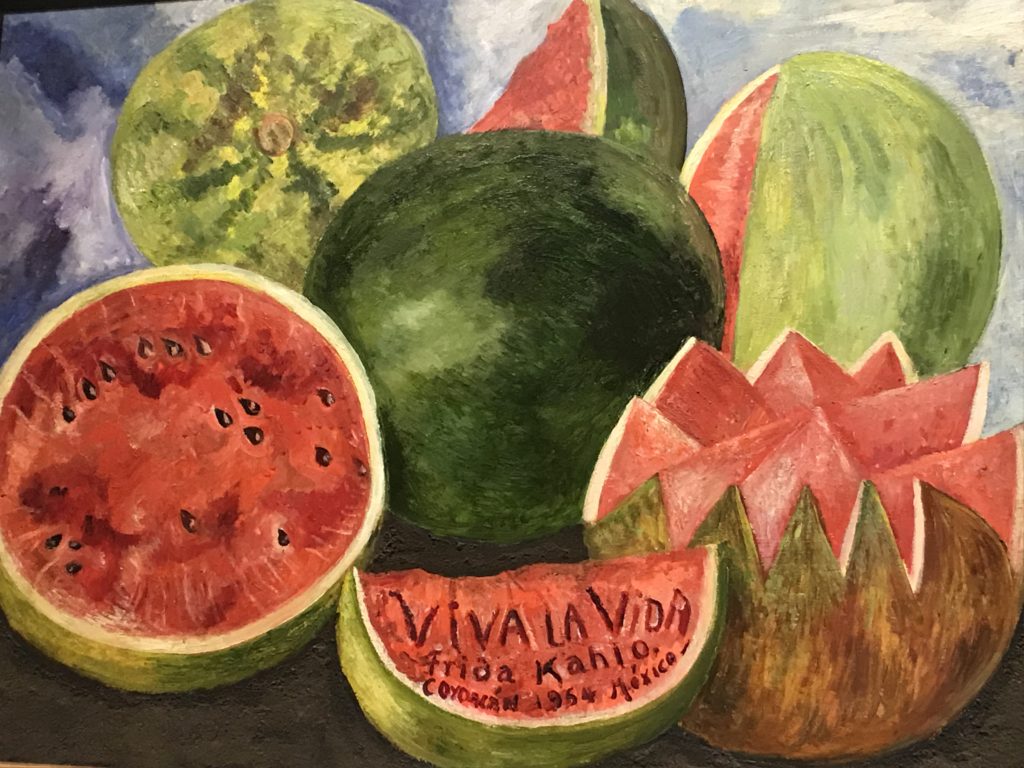
There is little need for weather reports in CDMX. Know that it will rain in the afternoons, anything from a light mist to a downpour. The best way to tell when to find an inside café? When the real rain storm is about to begin, the endless numbers of kiosks and venders start pulling the tarps out. Never a moment too soon.
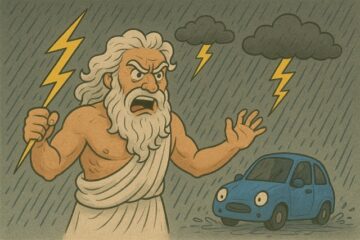
0 Comments